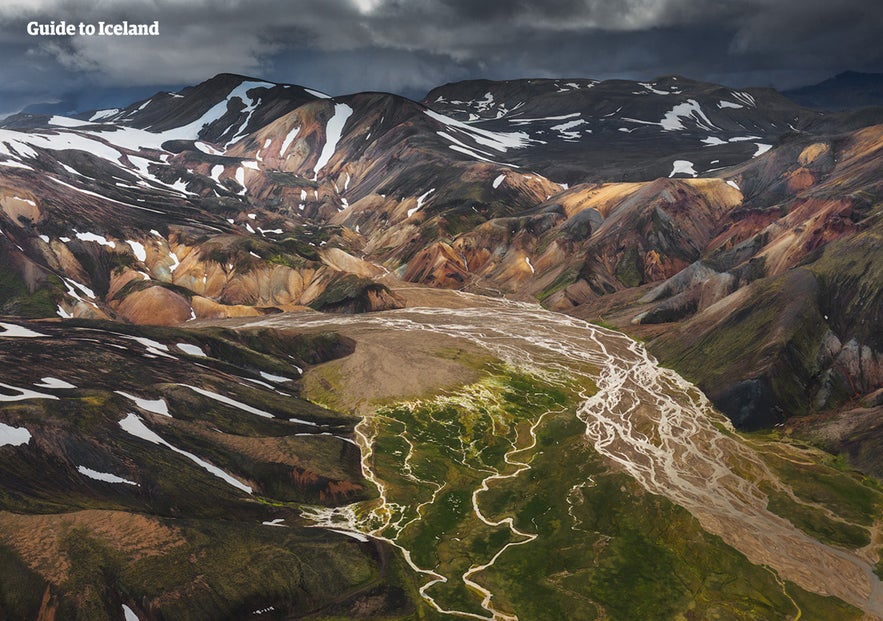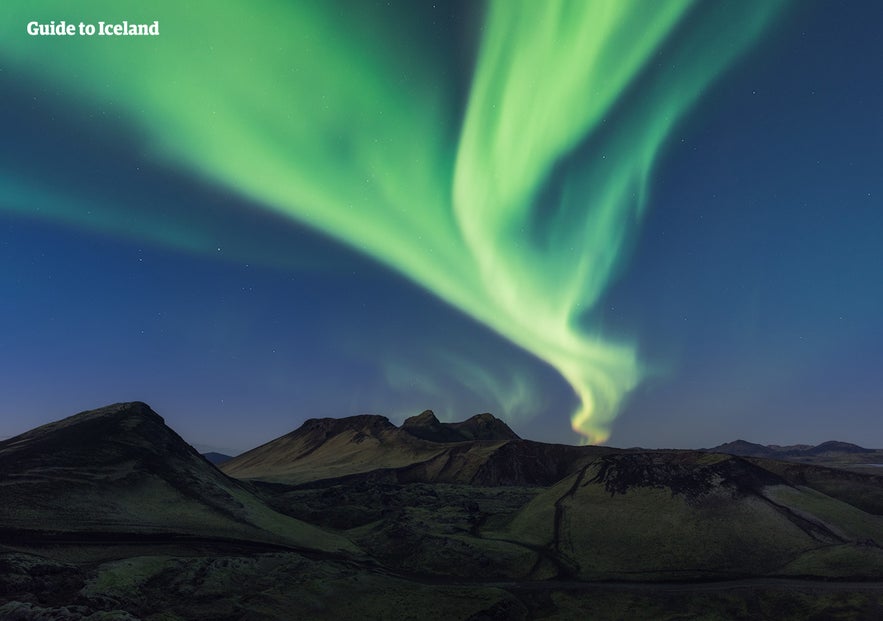
What To Pack for Iceland for All Seasons

- Essential Things To Pack for Iceland
- What To Pack for Iceland in Summer
- Iceland Packing List for Summer
- What To Pack for Iceland in Autumn
- Iceland Packing List for Autumn
- What To Pack for Iceland in Winter
- Iceland Packing List for Winter
- What To Pack for Iceland in Spring
- Iceland Packing List for Spring
- What To Pack for Hiking in Iceland
- Packing List for Hiking in Iceland
- Extra Gear Needed When Camping on Hiking Trails
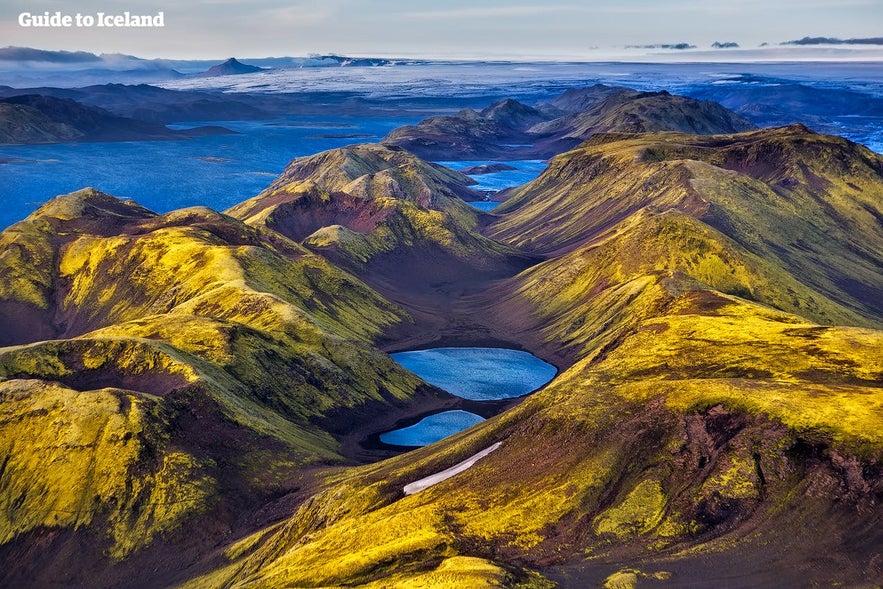
Learn what to pack for Iceland, whether you’re planning to stay in Reykjavik, travel the entire Ring Road, or hike remote areas of the Highlands. Regardless of when you plan to travel (summer, winter, spring, or autumn), this guide covers all you need to know about packing for Iceland. Read on for Iceland packing lists for every season and more.
- Find out precisely What to Do and Where to Go in Iceland
- Read about The Weather in Iceland & Best Time to Visit
- Download the Top 10 Apps for Traveling in Iceland
Naturally, the name Ice-land has given you some indication of the clothing that might be required. However, one of the first things you learn when researching Iceland is to expect all kinds of weather in Iceland, no matter the season. You can begin compiling a list of what to bring to Iceland from this fundamental assumption.
What you pack for Iceland is entirely dependent on certain factors; what will you be doing while you're here? In which season will you be arriving? How long will you be staying in Iceland, and are you planning on sleeping in a hotel or camping? Will you be purchasing outdoor gear when you arrive or are you bringing it from home?
Thankfully, you don't have to answer these questions alone. Below, we have included a checklist of what to wear in Iceland for each season and recommended things to pack. So what are we waiting for? It's time to discover what to take to Iceland.
Essential Things To Pack for Iceland
When preparing your packing list for Iceland, your mind is likely focused on all the fun and adventure that awaits.
Regardless of whether you plan to stick to sights of the Golden Circle, or you decide to explore more remote areas such as the Hornstrandir Nature Reserve in the Westfjords or Thorsmork Valley in South Iceland, it can be hard to know what to take. Whatever you pack will be dependent on your travel plans and outdoor activities.
However, some things are Iceland essentials to pack, no matter what season you choose to arrive or what you plan to do when you get here:
- Sturdy Boots
- Layers of Clothing
- Base Layers
- Jumpers
- Thermal Tops and Leggings
- T-Shirts
- Long-Sleeved Shirts
- Windproof/Rainproof Coat
- Swimming Gear
- Passport
- Boarding Pass
- Credit/Debit Card
- Driving License
- Tour Vouchers
- Electronics
- Mobile Phone
- Camera
- Hairdryer
- Adapters
Unfortunately, since you can expect all kinds of weather in Iceland no matter which season, this makes packing a bit more complicated. Packing light, at least.
Whatever else you do, don’t forget the basics. Passports, tickets, credit cards, your driving license, and tour vouchers are easy to forget amid the chaos of packing for an exciting trip.

If you are planning to rent a car or take a self-drive tour, you’ll, of course, need your driving license with you. Specific tours, such as ATV & buggy tours or snowmobiling, also require you to see your driving license before they’ll let you take charge of the vehicle.
You’ll also want to make sure you bring all the electronics you need, plus adapters for Iceland’s Europlug sockets (typical European sockets).
As for clothing, regardless of what time of year you plan to arrive in Iceland, you’ll want to pack plenty of layers of clothing, a wind/waterproof coat, and some sturdy hiking boots.
Come rain or shine, you’ll find locals enjoying the swimming pools and geothermal baths. A swimsuit should be brought with you wherever you travel to Iceland. After all, you never know when a hot pool might turn up. Of all the things you need in Iceland, a swimsuit is often overlooked.
You obviously will not want to miss out on a visit to Iceland’s stunning Blue Lagoon on your visit, or even the Myvatn nature baths traveling round in the north. Relaxing in these geothermal hot spots can be the perfect way to start, break up or end your trip, so don’t forget your swimsuit.
Of course, this is merely a summary of some critical things to bring to Iceland. Read on for more specific recommendations for each season and activity, tailored to when you plan to travel to Iceland and what you intend to do when you arrive.
What To Pack for Iceland in Summer
Summer in Iceland provides a welcome respite from the dark winters that only start to brighten after the winter solstice (Dec. 21). The changes in the weather give some stark seasonal contrasts.
The midnight sun is one of the summer's most significant natural attractions you could witness. This spectacle begins after the summer solstice around June 21. As you can imagine, this makes traveling to Iceland in July extremely popular.
If you’re traveling at this time, you’ll want to make sure you book your airport transfer well in advance to provide a smooth start to your trip to Iceland.
During the beautiful summer months, visitors can expect 24 hours of sunlight because although the sun does set for an hour or so, the daylight lingers.
Though the weather doesn’t always feel traditionally like summer in Iceland, summertime runs from June through August.
Summer packing is not easy, given that Icelanders are used to experiencing all four seasons in a day. You have to hope for the best and prepare for the worst when visiting our shores.
There are some obvious items you’ll want to take with you: trousers, t-shirts, socks, underwear, shoes (you’ll want boots if you’re leaving Reykjavik), jumpers/sweaters, and don’t forget your best party outfit for the Reykjavík nightlife.
It’s also worth noting that summer in Iceland is the only season in Iceland that it’s worth bringing over any formal “going out” shoes with you. If you bring this type of footwear in other seasons, you may be prone to slipping (or worse, falling) in both the city and countryside due to the frequently icy ground. In all other seasons, footwear should consist of practical, sturdy shoes with excellent grip to help avoid unnecessary accidents.
Iceland Packing List for Summer
What To Pack for Iceland in Autumn
Fall, or autumn, in Iceland is short but sweet. By the end of August, the trees start to turn orange and brown, and by the end of September, the country will be braced for the winter ahead.
The temperature will likely be cool (below 50 F or 9 C), and the winds usually pick up, making it feel colder than you might expect. This season, in particular, can be tricky when deciding on what to bring to Iceland.
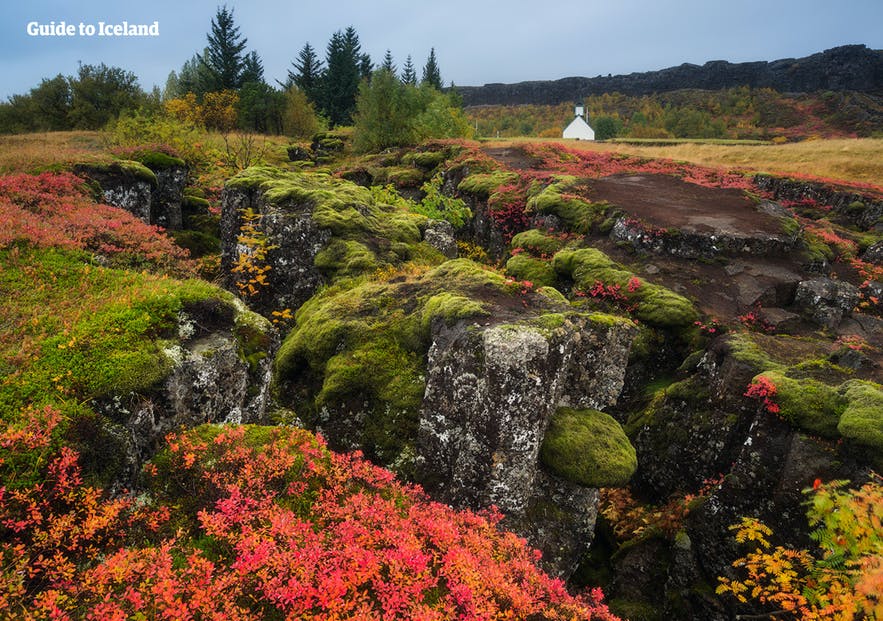
Packing for Iceland in autumn is tricky because the country tends to get a lot of “window weather.” This means it can look like a pleasant day from the inside when it’s much cooler outside, often due to wind chill.
If you’re planning a visit to Iceland in autumn, this is a list of the items we highly recommend you bring with you when visiting our shores:
Iceland Packing List for Autumn
What To Pack for Iceland in Winter
Icelandic winters usually are around 32 F (0 C), though temperatures will vary between 14 F (-10 C) up to 50 F (10 C).
The winter winds can be cutting and cruel. Whether it's a gentle breeze or a full-blown storm, gusts are in no short supply here, and they can make it feel a lot chillier than the temperature would initially suggest.
Winter in Iceland tends to last from October through to March. Although the midnight sun is long gone, the Icelandic sky is still alight with the northern lights’ splendor, making travel to Iceland in December particularly popular.
Golden Circle Tours, in particular, are in high demand in these months, so it’s worthwhile to book ahead to ensure you get to see the best spots in the country.

There are so many things to do when visiting Iceland in winter that you won't want to miss out because of inadequate clothing. From Adventure Tours to Ice Cave Trips; you will want to make sure you're well prepared for your Iceland vacation.
It’s much more important to focus on bringing layers of clothing with you than an expensive parka jacket. Using layers helps to keep you fully insulated and also allows you to remove or add layers when needed, based on the winter conditions you encounter.
Iceland Packing List for Winter
- See also: Blue Lagoon Travel Guide
What To Pack for Iceland in Spring
Spring in Iceland is almost as short as fall; it starts in April and continues through May and June. During this time, the North Atlantic puffins begin to make their way to the island and nest in cliffs by the shore.
The temperature is a cool 32 F (0 C) to 50 F (10 C), and you can expect some rain and wind and even occasional snow showers. However, the country is beautiful at this time of year.
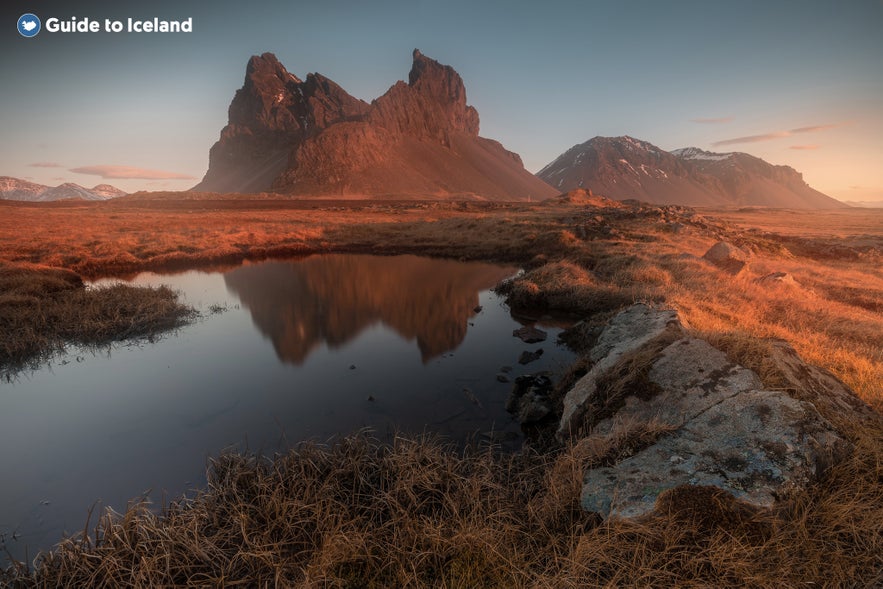
Spring is the perfect time to take a self-drive tour around Iceland’s Golden Circle and Snæfellsnes Peninsula or venture out on the water with a boat tour. With these boat excursions, you can explore glaciers, sea animals (such as whales and seals) and experience some more hard-to-reach areas of Iceland.
In May, it’s common to start seeing the famous purple lupin plant appear. This will blossom throughout the summer months of June and July and can make for some stunning colors as you travel around the country.
Also, while the weather is still cool, you can enjoy glacier hiking on some of Iceland’s staggering ice caps. However, if you plan to take advantage of activities such as these, you’ll need to prepare the correct packing list for Iceland.
Iceland Packing List for Spring
- See also: Iceland's Seasonal Contrasts
What To Pack for Hiking in Iceland
Hiking is an incredibly popular activity during the summer, given it's the only time of the year that the spectacular Central Highlands are accessible to visitors.
Of course, there are numerous places to go hiking in Iceland. Quite frankly, there are far too many to name.
The colorful landscape of Landmannalaugar draws wanderers and ramblers from around the world, providing a cheap and natural experience that is authentically Icelandic. But prospective walkers could choose to explore the spectacular Reykjanes Peninsula or trek the remote trails of East Iceland.
- See also: Hiking in Iceland
Packing List for Hiking in Iceland
If you’re going hiking with ambitions to spend some time overnight, you must bring camping equipment.
Remember, there are no shops, permanent homes, or gas stations along most of the hiking trails in Iceland. This means that everything you could need will have to be brought with you in your waterproof hiking pack.
Extra Gear Needed When Camping on Hiking Trails
So, you're feeling pretty prepared, but there's no shaking that overlying feeling that you've forgotten something important.
Well, fear not because we've yet to run through some of the essential items for your trip. We recommend that the below details are kept safe and secure at all times so that no hiccups occur during your trip:
Did we forget something? What did you find were the most valuable items that you packed for your trip to Iceland? Is there anything that you wish you had brought that you forgot? Please, make sure to leave your thoughts and queries in the Comment box below.
Andre spændende artikler

Islands vejr, klima og temperaturer året rundt
Få alt at vide om vejret på Island. Da det er en ø med ekstremer, er vejret ingen undtagelse. Find månedens gennemsnitstemperatur, vejret på de enkelte årstider, hvordan vejret skifter mellem de forsk...Læs mereKort over Island
Find det kort over Island, du har brug for, med disse 20 islandske seværdighedskort. Vi har lavet alle de væsentlige kort over Islands vigtigste attraktioner i Google Maps for nemt at hjælpe dig med...Læs mereHvor dyrt er der på Island? Hvornår du skal rejse og hvordan du sparer penge
Find ud af, hvor meget en rejse til Island koster, så du bedre kan lægge et budget for din rejse. Hvor dyrt er der på Island? Hvordan er tilstanden for den islandske valuta? Læs videre for at finde...Læs mere

Download Islands største rejsemarkedsplads til din telefon for at administrere hele din rejse på ét sted
Scan denne QR-kode med dit telefonkamera, og tryk på det link, der vises, for at lægge Islands største rejsemarkedsplads i lommen. Indtast dit telefonnummer eller din e-mailadresse for at modtage en sms eller en e-mail med downloadlinket.


